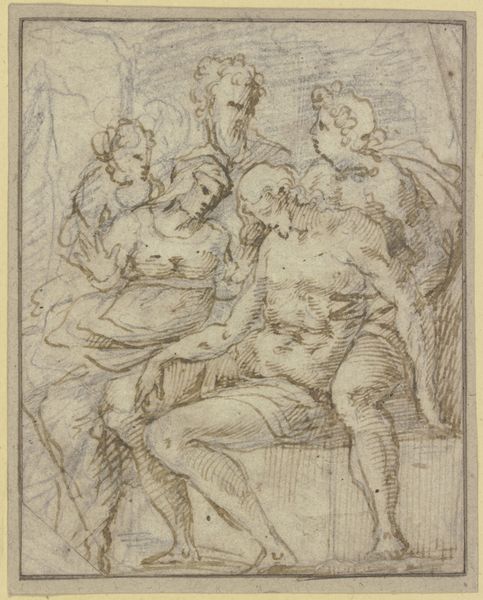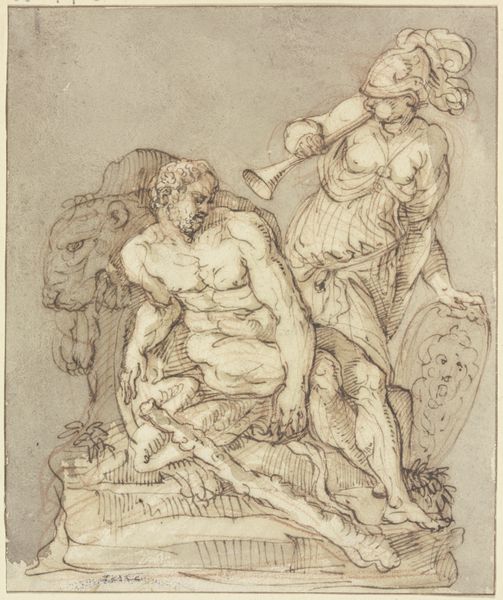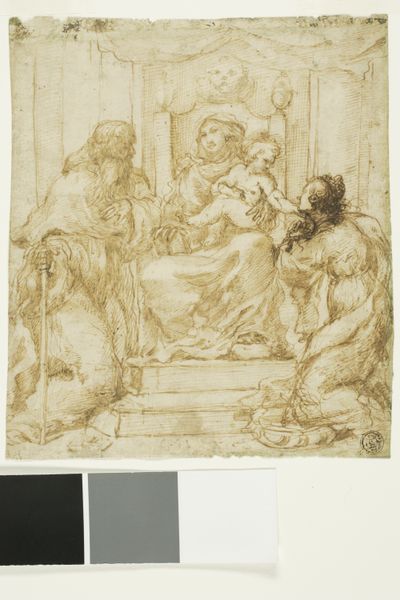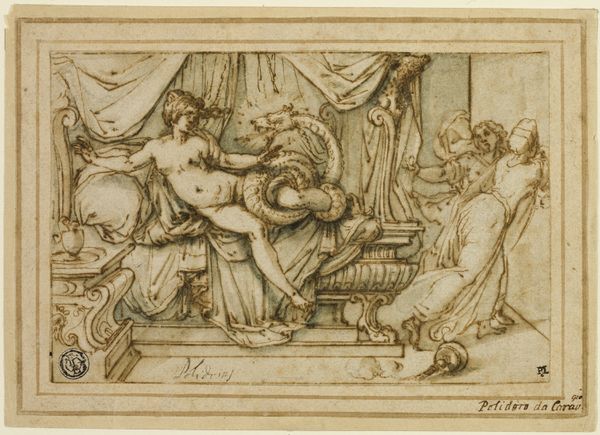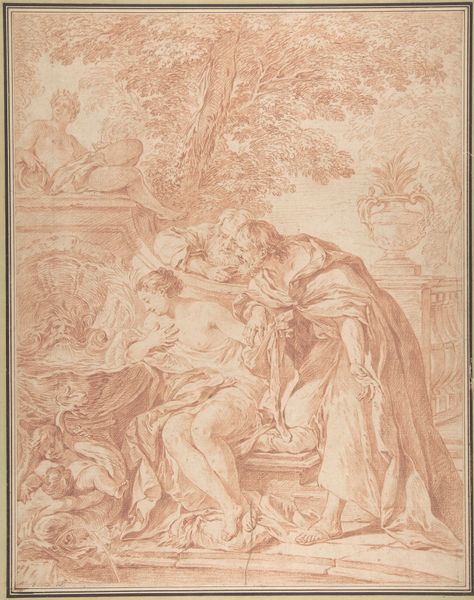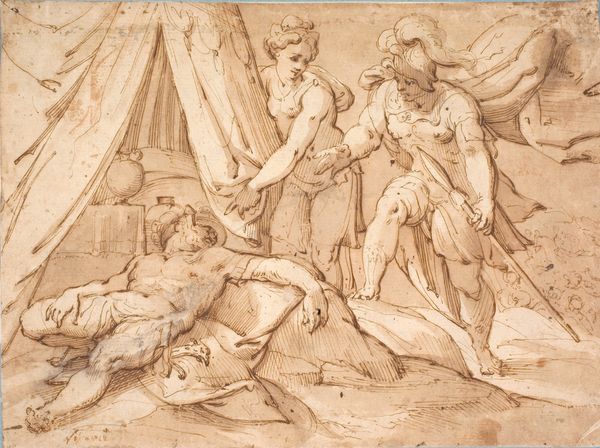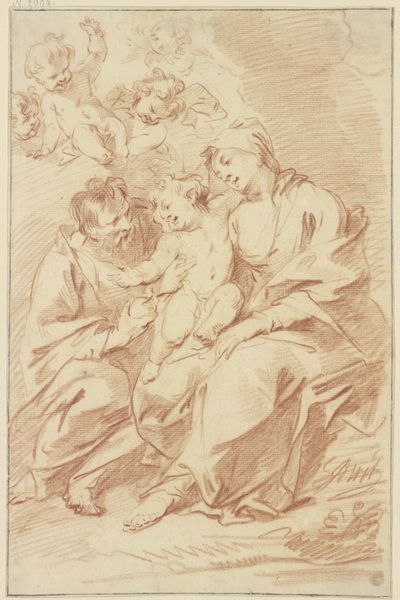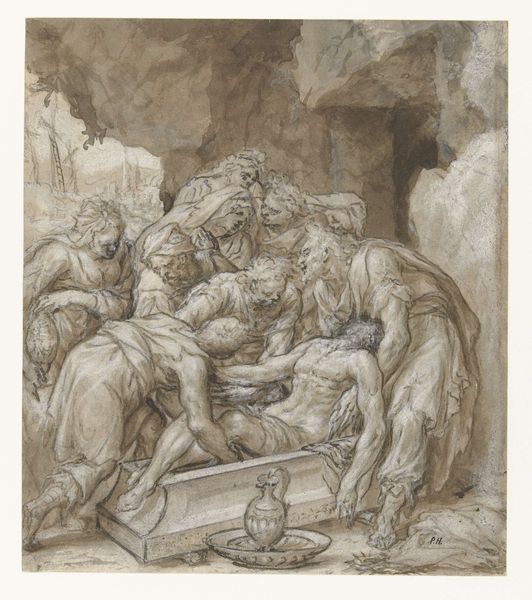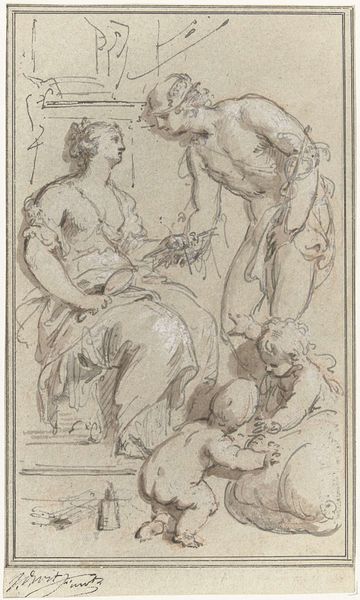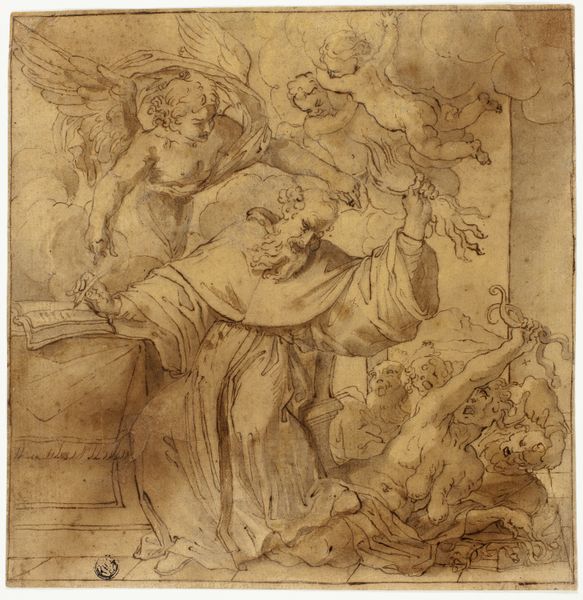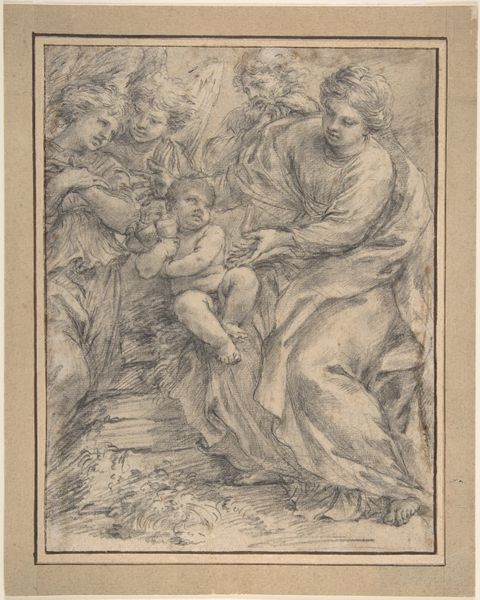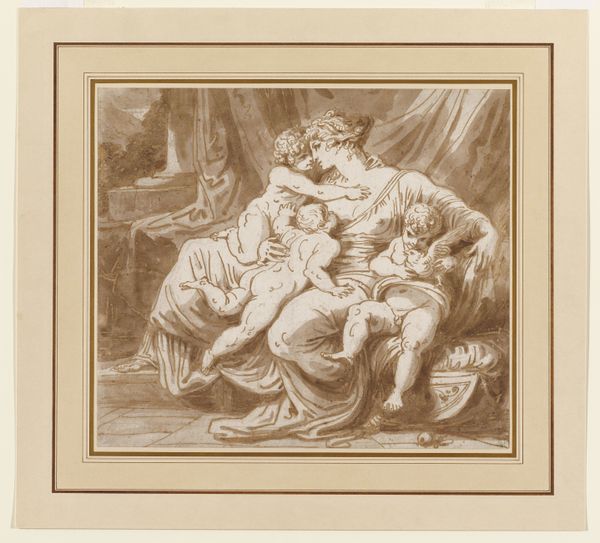
drawing, print, paper, dry-media, ink, pencil, chalk, charcoal, black-chalk
#
drawing
#
narrative-art
# print
#
classical-realism
#
charcoal drawing
#
figuration
#
paper
#
romanesque
#
dry-media
#
ink
#
pencil drawing
#
pencil
#
chalk
#
water
#
charcoal
#
history-painting
#
academic-art
#
nude
#
black-chalk
#
erotic-art
Dimensions: 435 × 276 mm
Copyright: Public Domain
Editor: This is Giuseppe Cades' "Rape of Lucretia," a print created in 1795 and currently held at The Art Institute of Chicago. It’s… unsettling. The stark contrast of light and shadow amplifies the violence depicted. What's your interpretation of this piece? Curator: It’s a powerful, albeit disturbing, representation of a pivotal moment in Roman history, deeply entrenched in the sociopolitical discourse of the time. Cades, working in the late 18th century, taps into a Romanesque fascination with classical narratives. The scene presents not just individual tragedy but also serves as a visual argument—reflecting contemporary concerns about power, virtue, and the stability of republics. Notice how the figure of Lucretia is idealized yet vulnerable, and consider how this resonates with contemporary power structures. How might its original audience interpret this representation of power and its abuse? Editor: I guess I hadn't thought about how viewers would have seen this through the lens of *their* political anxieties, not just the event itself. Did the choice to depict this scene as a print influence its distribution or its message? Curator: Absolutely. Prints facilitated broader access and circulation of such images, enabling the artist to participate in public discourse and potentially sway popular opinion on morality and governance. Its relatively accessible format turned art into a medium to address virtue, corruption and the impact of events upon individuals as metaphors of collective life. This easily shared depiction became more than a tragic, individual crime - it was fodder in political arguments. Editor: That really highlights how art can actively engage in political and cultural discussions, and the role of accessibility, whether intended or unintended. Curator: Precisely. It goes beyond the literal depiction to explore the role of images in shaping historical consciousness.
Comments
No comments
Be the first to comment and join the conversation on the ultimate creative platform.
